Joe Edwards observed what happens in the environment of a School Streets initiative on Crescent Road in Reading.
Carol Richards pulls the heavy metal no-entry sign to the middle of the road and places a traffic cone on either side. It’s now 2.45pm on a Thursday afternoon and another session of marshalling the Crescent Road school street has begun.
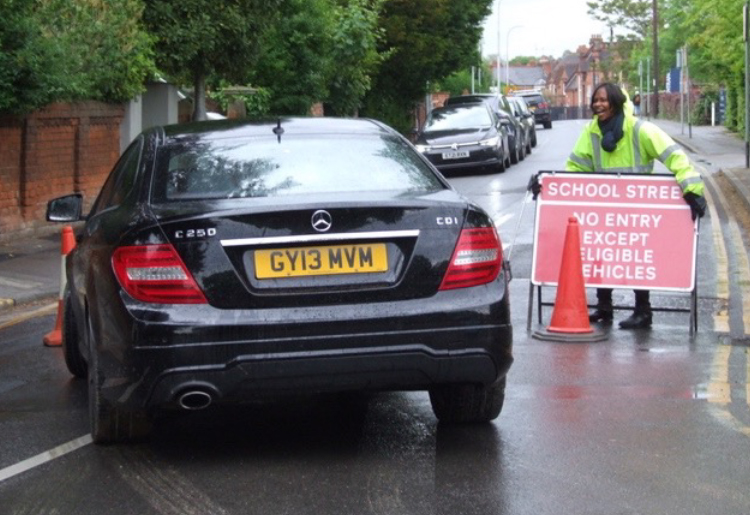
The road is wet, but the rain stopped half an hour ago, so today the high-viz yellow jacket will stay dry. However, Carol has to be here several days a week, come rain or shine, as the leader of the team of volunteer marshals who turn out twice a day, every day during term time.
Crescent Road is a narrow but very busy stretch of road in East Reading, which apart from a lot of local traffic, serves as a rat run for motorists going east out of town wanting to avoid Cemetery Junction. There are three schools along the road, Alfred Sutton Primary, the UTC college and Maiden Erlegh in Reading secondary school. These cater for many hundreds of pupils from nursery to sixth form.
Carol has been part of the team that set up and has run the scheme since its inception in February 2022. She is retired and lives locally and does it like all the others to put something back into her local community. Her own children are now grown up and she has no direct interest in any of the schools, but she turns up several days a week to make sure other mothers’ children get home safely. Her biggest wish is that she could find more volunteers to help spread the load.
The rules are quite simple – no motorised vehicles are allowed past the barrier unless they have reason to be visiting one of the schools or are an authorised taxi picking up a student. This means Carol has to drag the barrier to one side, move the cone, remind the driver that the speed limit is 10mph, then move the barrier and cone back again after they have passed through. There is another volunteer down at the Wokingham Road end doing the same thing and the two of them communicate by walkie-talkie.
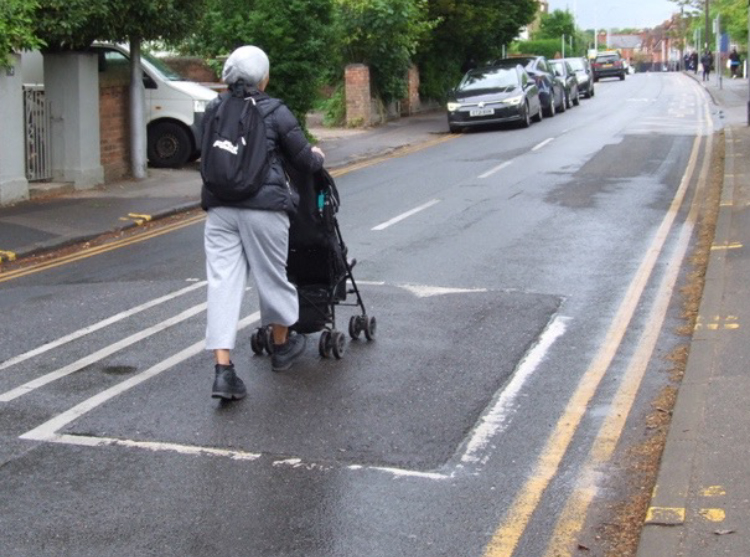
It is obvious quite quickly that the scheme is working and is much appreciated. A woman comes by with a little one in a pushchair on her way to collect an elder sibling from Alfred Sutton. She walks happily in the middle of the road and tells me that closing the road has made everything so much better at end of school time.
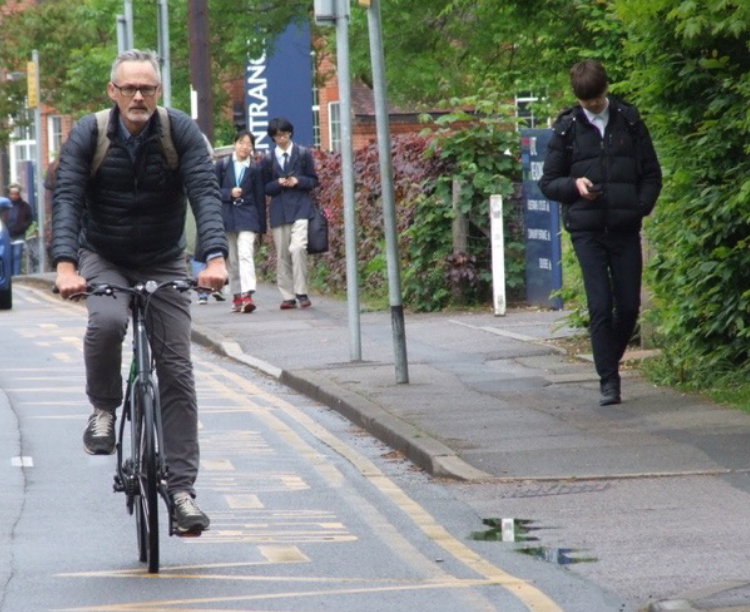
A local resident comes by on his bicycle and gives Carol a cheery wave. He won’t have to fight with cars until he gets past Bulmershe Road. He should try cycling past Reading School at the same time and he would take his life in his hands.
When Maiden Erlegh comes out suddenly there are dozens of people everywhere. The staff mainly wait until after the road re-opens to drive away by which time the majority of the students have gone.
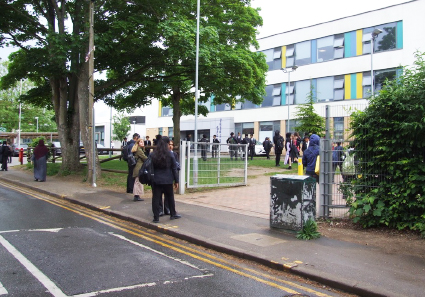
The Head of Maiden Erlegh told me that he very much supported the scheme and that it made the start and end of the day far less stressful. For Carol and her volunteers, the afternoon is far from stress free. There are too many drivers who argue the toss, and some can get quite rude. There are often chaotic scenes at the Bulmershe Road junctions as vehicles try to turn around or can’t decide which way to go. But for the children and their parents, it all looked very calm and well organised, even if some of the students wanted to ride their bikes in an anti-social way.
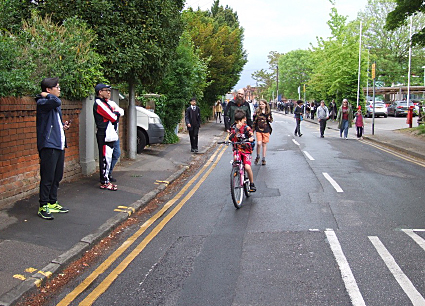
Quite a few of the students are cycling and there are several cycle racks visible, but there were less bikes than I expected. When I spoke to a couple of teachers, they were of the opinion that the scheme has encouraged some more, but not many more to come by bike. One of the teachers admitted that she had started to cycle to school, but now comes by car.
The scheme gets no funding from the local authority, and it was obvious that it needed better provision. The signage is quite good and clear, but proper fixed electrically operated barriers would make it look far more official, and also ease the load on the marshals. The walkie-talkies are provided by one of the schools and another does a certain amount of the admin, but ultimately it is totally reliant on volunteers.
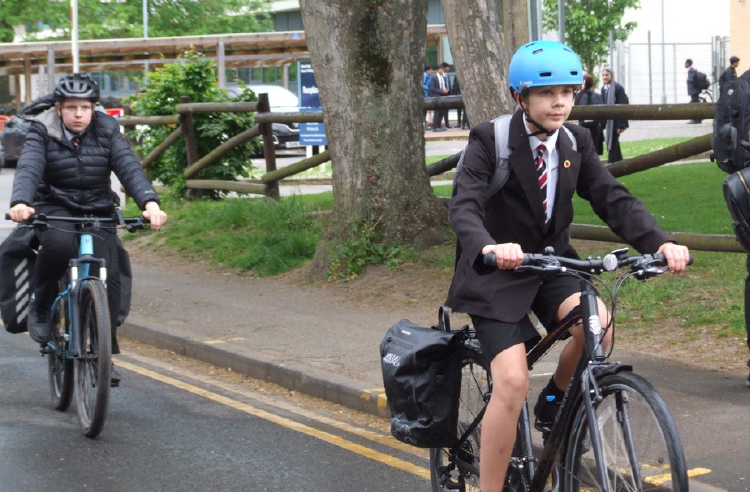
It is difficult to see how you could measure its effectiveness except through the opinions of those who use it. Certainly the parents and locals I spoke to wanted it to continue, but some of the car drivers were far from pleased at being sent round the block. How much of a contribution it makes to cleaner air and safer transport is difficult to measure, but I suspect that the low uptake of cycling from the students reflects the fact that once they are away from Crescent Road, they are still at the mercy of Reading’s merciless traffic.
Joe Edwards
RCC Chairman

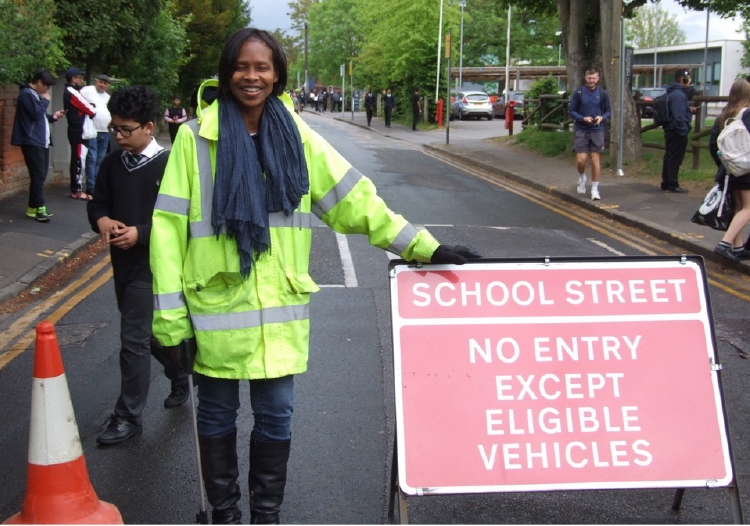
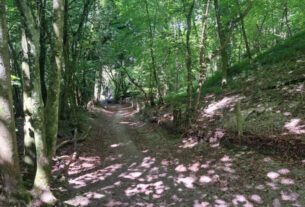
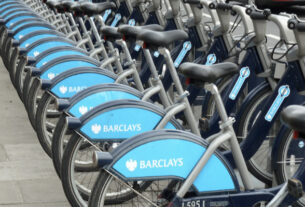
Without School Street there would be many many children jostling along narrow pavements at school start and end time & competing to cross the road among idling cars picking up other kids , trying to turn round etc..I’ve watched some hairy scenes..